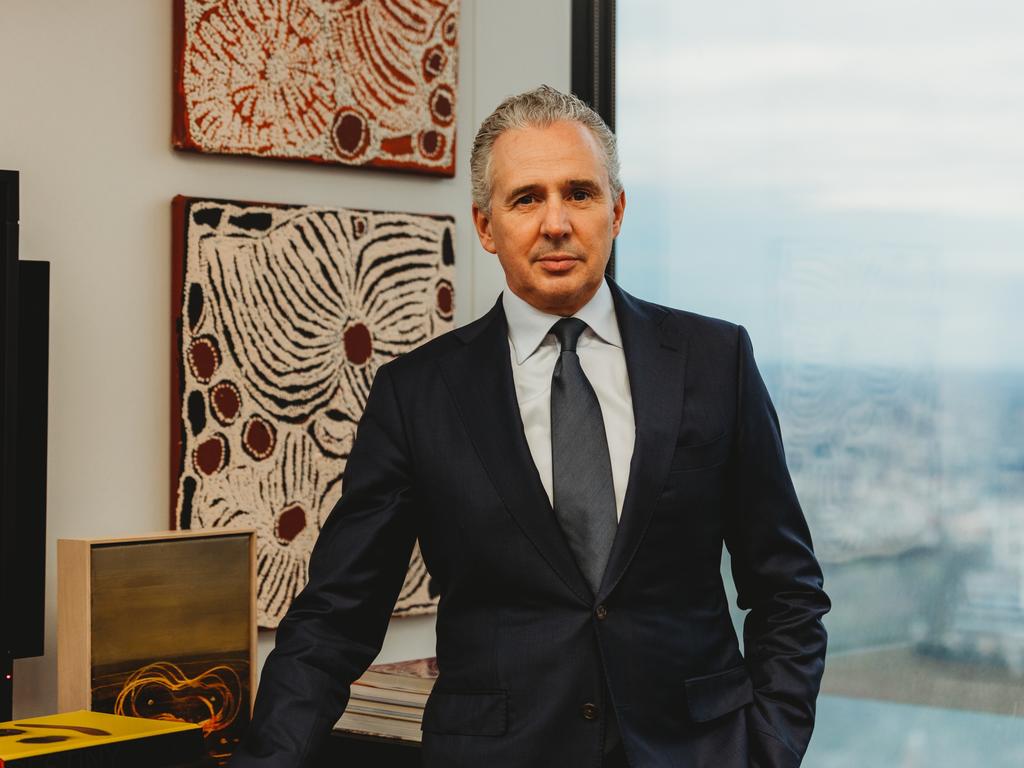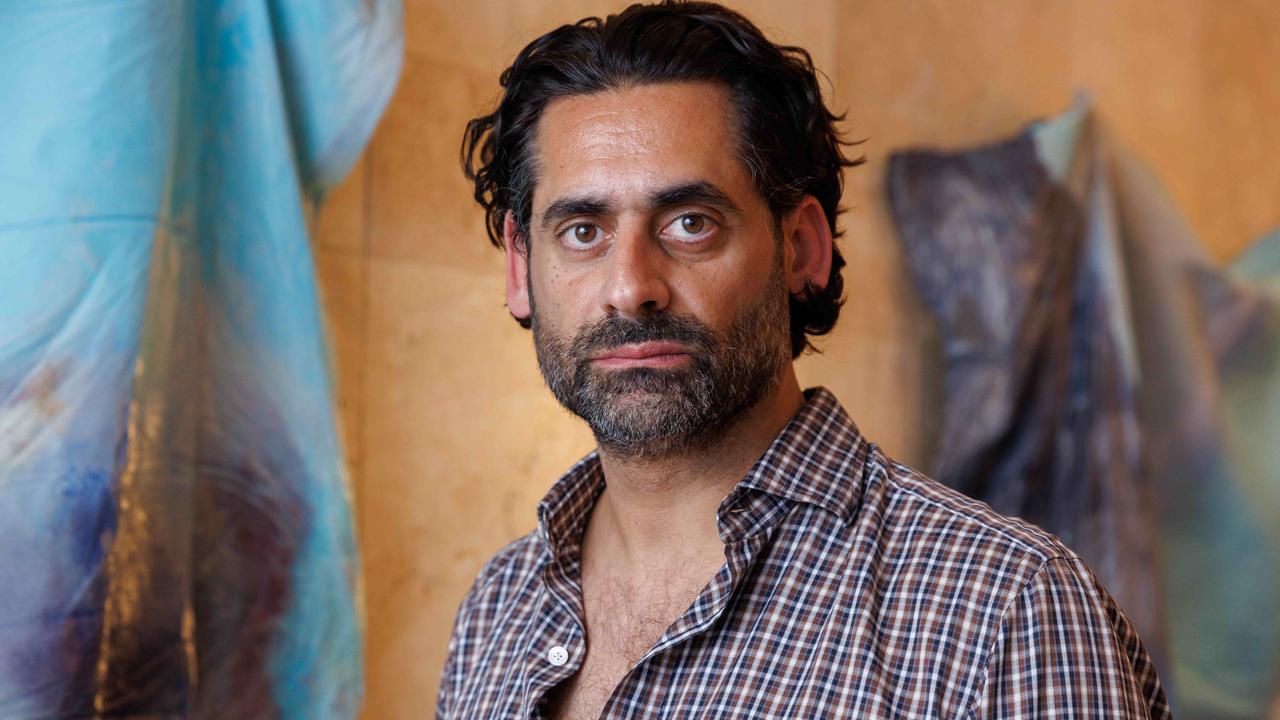New Telstra CEO Vicki Brady faces growth challenge as Andy Penn steps down
As Telstra CEO Andy Penn steps down on his birthday, new chief Vicki Brady needs to position the telco for the major tech shift already underway.
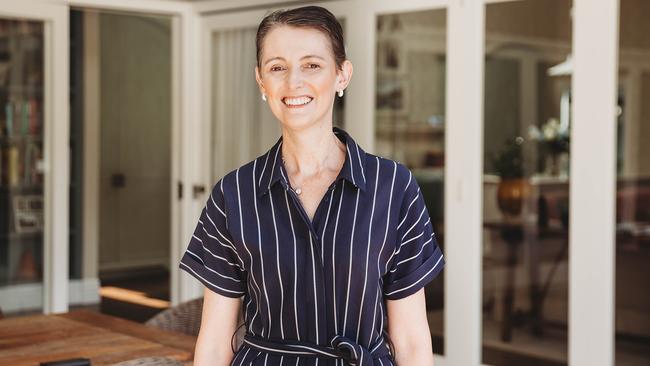
Business
Don't miss out on the headlines from Business. Followed categories will be added to My News.
From today incoming chief executive Vicki Brady will need to start positioning Telstra in terms of a 2030s business.
This means putting the telco at the centre of all the network connections that tie Australia’s digital economy together and this gives it best chance to grow again.
That’s the opportunity for Brady to take as she takes charge of a telco that has been battling massive structural changes while managing decline in its core business for the best part of a decade.
The once all-powerful Telstra no longer controls the digital plumbing that connects Australia’s households – that now sits with the NBN. While its flagship business – mobiles – is hostage to technology cycles and offers limited levers for growth.

Increasingly we are communicating to one another through the social media platforms provided by global tech giants Facebook’s WhatsApp, Google Messages or Apple’s iMessage and in coming years this threatens to cut Telstra out of the equation entirely.
Brady, who comes from the tiny NSW Riverina town of Holbrook has been the telco’s chief financial officer over the past two-and-a-half years, is under no illusion about the challenges. And growing up in a town of just 1200 she knows more than any that connectivity should be at centre of what Telstra does.
“What’s exciting is there’s so much technological change happening that relies on that connectivity. I think Telstra has such a great opportunity to help really bring together and enable our customers to make the most of what can be pretty fragmented technology that relies on our connectivity,” she tells The Australian.
She will need to keep Telstra lean as it moves more like a tech player compared to its utility past when she takes charge from long serving boss Andy Penn on September 1.
“Will Telstra be a growth company again? Yes, that’s absolutely our ambition,” Brady said.
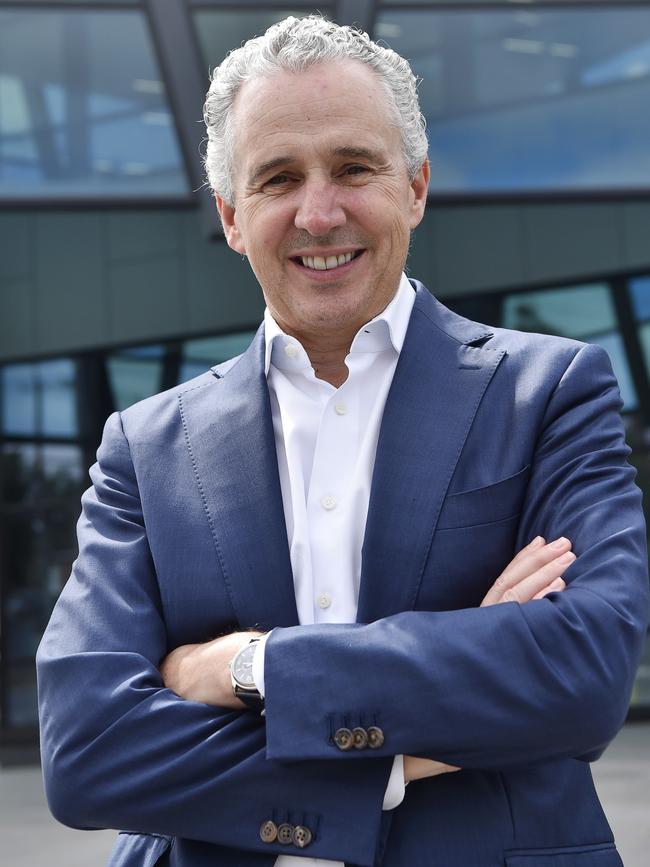
Penn, who also turned 59 on Wednesday, said after more than seven years the timing for a CEO transition was right. Nothing should be read into the announcement being made on the morning after the federal budget, he added.
His exit comes before the completion of his own Telstra 2025 restructure program that seeks to build on the massive Telstra 2022 cost cutting plan which comes to an end this year. Although he pointed out that Brady played a role in developing T25 plan.
“I said to (Telstra chairman) John Mullen, a few months ago was this would be a good time for me. I’m 60 this time next year and there’s a lot of things that fall into place, but you can assume that a process like this has a lot of moving parts to it. So it doesn’t always happen by accident,” Penn said.
“There are many things about which I’m passionate, including digital leadership, technology, innovation, cybersecurity in the arts. And I’m looking forward to continuing to make an impact in those areas in the next phase of my career”.
For Telstra there are a signs of change already underway. The new chief executive will be based where she currently lives in Sydney, a long way from its Telstra’s traditional executive base on the corner of Exhibition and Lonsdale St in Melbourne. This says, Brady was a personal decision and underscores that Telstra is in the communication business with many of her new team based in Melbourne.

The 50-year-old Brady is a KPMG alumni who came to Telstra from arch rival Optus in 2016. It was at Optus where she oversaw that telco’s consumer business and marketing under former boss Paul O’Sullivan before taking on the consumer role at Telstra.
From there Penn quickly moved her to Telstra’s CFO and strategy role in mid-2019, which has traditionally been the launching board for the top job.
O’Sullivan told The Australian Brady was “the right choice”. She stood out as a high-performing executive early at Optus and they tested her across different areas of the business.
“She’s a unique executive in that she’s got the full complement of skills. She’s very good at understanding the financial drivers of a business. But she’s also very good at building teams and motivating people,” said O’Sullivan who is now chairman of Optus.
With Fortescue chief executive Elizabeth Gaines outlining her retirement earlier this year, Brady emerges as one of the most powerful female executive among the ASX-listed companies alongside Macquarie Group’s Shemara Wikramanayake.
This was not lost on Brady who said she is proud to be the first female CEO of Telstra.
“I do have two young daughters so I hope it inspires them to stay resilient and face their dreams and hopefully, that inspires other women and girls as well to do that”.
Penn’s way
For Penn who has been in the top job for more than seven years, he has determined the timing of his exit. And to his credit Telstra chairman John Mullen has overseen an orderly transition of the CEO to an internal successor – something which is becoming the exception rather than the rule among big companies lately.
Mullen, who is currently visiting family in the UK, said the Telstra board considered internal and external candidates but Brady was simply the best person for the role.
“I’ve personally met with quite a number of talented executives, but none of them were the better choice than Vicki, who was unanimously supported by the board,” Mullen said.
He said that as chairman he would “always rather go with an internal candidate” noting that the change of CEO in any organisation can be disruptive. The strong team focus of Telstra’s top executive ranks was also a factor in the decision.
Since early 2015 it hasn’t been all smooth sailing for Penn, himself a second-time CEO joining Telstra after a career in finance and wealth management. He was the last chief executive of AXA Asia Pacific (the old National Mutual) before it was acquired and carved up by AMP on this day in 2011.
When Penn took charge of Telstra in 2015 shares in the company were at $6.24 on Wednesday they closed slightly down at $3.90 During his time shares fell below $2.70, which came as a shock for Telstra’s huge retail investor base that for years had been sold the story of a growth company.
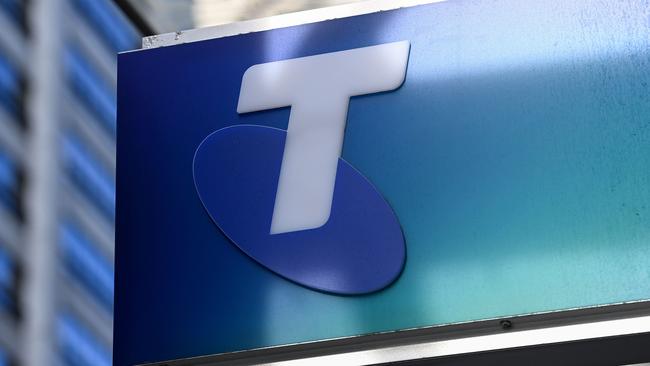
He had come under deep pressure early in his tenure with Telstra’s profits and revenue falling away faster-than-expected as the NBN started to make damaging inroads into his cash cow which was then the traditional fixed line business. He put investors offside as he rebased dividends which sparked a collapse in the share price.
However he wrestled this back with an aggressive restructuring program dubbed T22 that saw more than 8000 people leave over four years as well as a rewiring of how the telco did business. This put it on the path to securing $2.7bn in annual cost savings by this year.
Penn also pushed ahead with a massive structural split to unlock the value sitting inside the towers infrastructure that Telstra owned. He doubled down on growth plays including health technology. Penn acknowledged the support of the board through the tougher moments.
He says these programs, while radical, were necessary. It was about Telstra directly facing up to its external challenges and for it to change the way it operated across all levels.
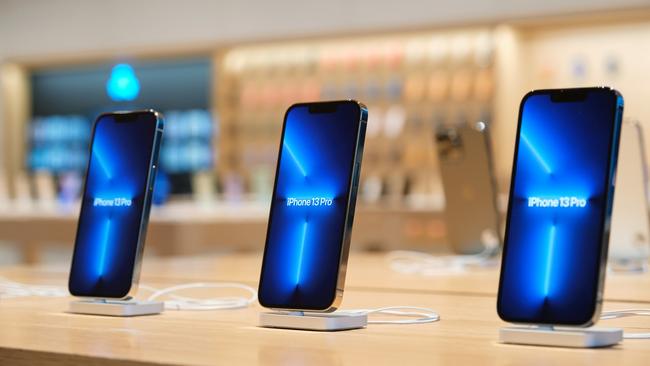
With improved cashflows and a windfall from the partial sale of Telstra’s mobile towers business the was able to pay a special dividend from its most recent December half results, marking the first time in years there was some increase – albeit temporarily – in a flat dividend.
“These decisions in life are always difficult. I love this job. It’s an incredible privilege. I love the company. But also what’s most important to me is to do the right thing for the company for all of our stakeholders,” Penn said.
“I think this is an excellent transition point. We’re on the cusp of delivering T22. It’s fundamentally about setting Telstra up for the future” he said.
Brady now takes the mantle to deliver growth which has eluded the company for more than a decade. She points to the turnaround in the last set of financial results where earnings were on the rise again. The T25 program which is targeting $500m in savings is expected to give it further momentum. But at the pace of change in Telstra’s world Brady will now need to be thinking of T30.
johnstone@theaustralian.com.au
Originally published as New Telstra CEO Vicki Brady faces growth challenge as Andy Penn steps down



